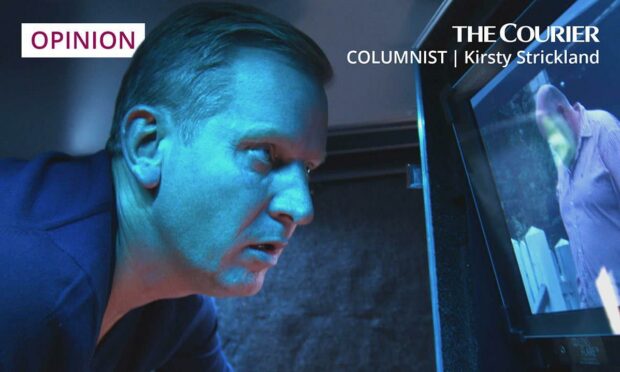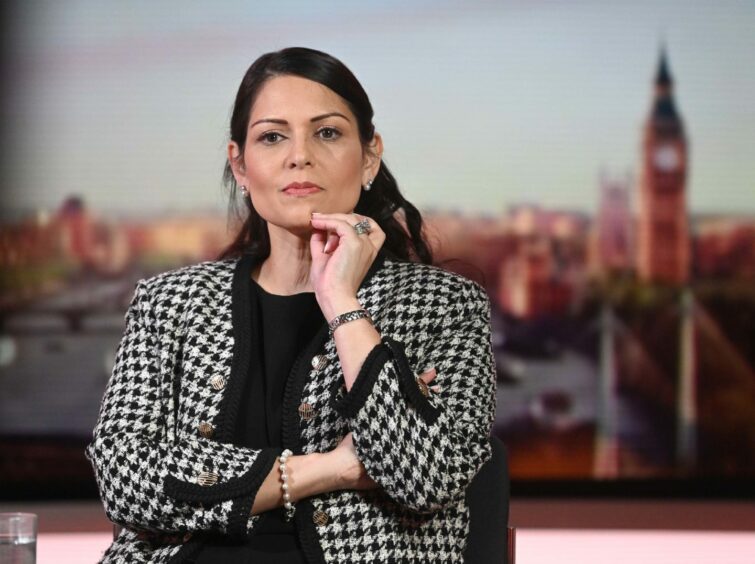On Sunday Channel 4 aired the first part of its new documentary, Death on Daytime, which exposes the exploitative practices behind the scenes on The Jeremy Kyle Show.
Through previously unseen footage and interviews with former members of production staff, we get a glimpse behind the curtain of the notorious daytime programme.
The show, which ran for 14 years on ITV, turned the combative Jeremy Kyle into a household name.
The documentary is harrowing and rage-inducing in equal measure.
In it, Jeremy Kyle is just as unlikeable as you would expect. We saw that his hectoring, patronising manner wasn’t only reserved for guests, but for the young staff that worked on the show too.
One of the most affecting moments for me came when the documentary makers spoke to the mother of a woman who went on the programme looking for help with her heroin addiction.
The mother appeared with her daughter on the programme in the hope that she would be offered a place at a rehabilitation facility.
Before the pair took to the stage, production staff told them that they would be competing for the potentially life-saving rehab bed with three other families.
This was a lie, told in order to extract as much emotion and drama from the guests as possible.
The young woman tries to explain her addiction to Jeremy Kyle. She accepts that she has lied and stolen to feed her habit. She says she wants to get better.
In response, Jeremy Kyle shouts over her. He berates her, humiliates her and mocks her illness. He tells her she should be locked up and that she is “a disgrace to society’”.
It’s all the more upsetting when you think of the live audience and all those working behind the scenes who quietly bear witness to this bullying of a vulnerable woman but do nothing to intervene.
He dehumanises her as she sits with her head bowed, screaming “what are you?” at her, as though she is something less than human. “You’re disgusting”, he tells her.
After managing to stay clean for 15 months after attending rehab, the young woman relapsed and sadly died.
Her mum said that she didn’t regret going on the show because she got her daughter back for one whole, wonderful year, but she admits that appearing on The Jeremy Kyle Show was the most traumatic experience of her life.
Why The Jeremy Kyle Show was axed
The documentary also explores the tragedy that led to the daytime show’s eventual cancellation.
Steve Dymond took his own life shortly after appearing on the programme, where he failed a lie detector test that he’d taken to prove he hadn’t cheated on his fiancé. His unmarked grave is shown in the documentary.
The Jeremy Kyle show was hugely popular at a time when poverty porn and scrounger propaganda was a staple of programming schedules.
Programmes about benefit cheats and bailiffs seizing the property of low-income families were sold as entertainment.
More than anything, we want to convince ourselves that we wouldn’t find programmes like The Jeremy Kyle Show so thrilling if they were aired today.”
The companies behind them made huge profits from human misery.
It might be comforting to think that this was just a sign of the times.
We want to assume that, as a society, we’re better and kinder now.
We want to believe that we now have a greater understanding of the impact of deprivation, mental health issues and addiction.
More than anything, we want to convince ourselves that we wouldn’t find programmes like The Jeremy Kyle Show so thrilling if they were aired today.
I’m not so sure. The UK Government’s ideological hostility towards low-income families is shown in its social security policies.
After years of punishing cuts to benefits and a punitive sanctions regime, the Conservative Party was returned to power with a huge majority in 2019.
Voters offered them another five years to do more of the same.
During lockdown, when there was a row over whether children in England should be offered free school meals, Conservative MP Ben Bradley claimed vouchers for free school meals were effectively a direct payment to drug dealers and brothels.
He later said his Tweet on the subject had been taken out of context.
Tory MP Ben Bradley denies he said that 'free school meals are effectively a direct payment to brothels and drug dealers.'
He also deleted these tweets. 👇 #ToryScumbags pic.twitter.com/BvLt12WOJo
— Anti-Tory, Anti-Brexit #JohnsonOut 🇺🇦 🇪🇺 (@MarieAnnUK) October 24, 2020
I’ve had to rely on the social security system twice in my life. The first came during a period of instability in my early adulthood, when I was in homeless accommodation.
The second was mercifully brief, necessary only for a few short months after I separated from my daughter’s father.
In the documentary, there was a striking moment when one of the production staff admitted that programme makers thought that because the guests were predominantly working class, they were less intelligent than them.
Those participants were deemed to be “thick” and “scruffs”.
That’s the impression I got on the occasions when I had to navigate the benefits system. Suspicion about your circumstances and motivation was automatic, whereas compassion, respect and understanding had to be earned.
In the years since, it seems that the hostility that underpins our social security system has got worse, not better.
The Jeremy Kyle Show might thankfully be a thing of the past, but the attitudes that helped make it hugely successful are not.












